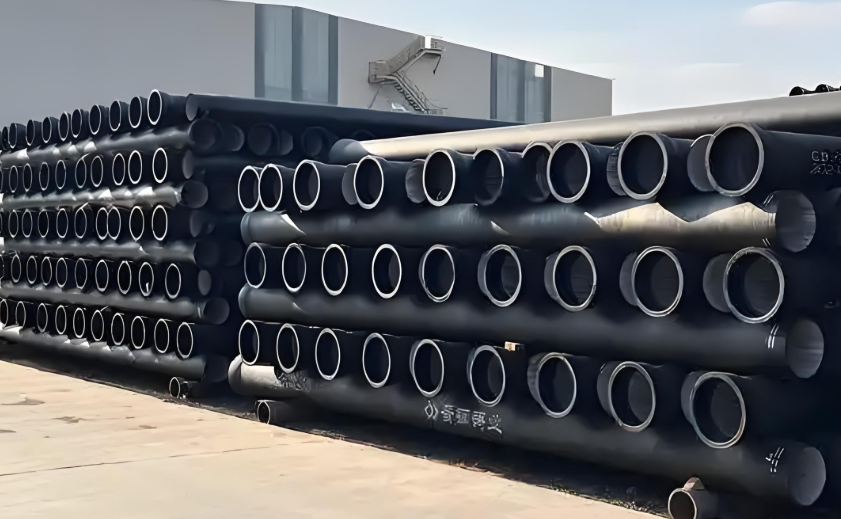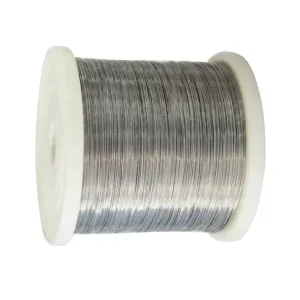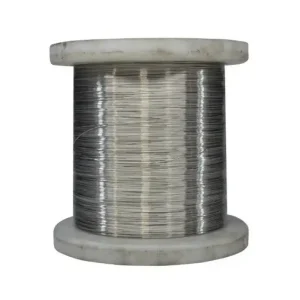K7 ductile iron pipe is an economical, low‑to‑medium pressure solution (≤1.0 MPa) manufactured to ISO 2531 and EN 545 standards, offering a minimum tensile strength of 420 MPa and yield strength of 300 MPa. Its dual‑protection system—metallurgically bonded zinc coating (≥130 g/m²) outside and cement‑mortar or epoxy lining inside—ensures over 50 years of corrosion resistance. Available in DN 80–DN 2600 mm (6 m lengths) with push‑on (T‑type), mechanical (K‑type), or flanged joints, K7 pipes excel in water distribution, sewage, drainage, and industrial networks. Certified to ISO, EN, and GB/T standards, they deliver reliability and budget efficiency for municipal engineers and contractors.
K7 Ductile Iron Pipe Specifications
| Parameter Category | Specification | Details/Values | Additional Notes |
|---|---|---|---|
| Basic Specifications | Standard | ISO 2531, EN545, EN598, GB/T 13295 | Complies with international standards for water/sewage applications |
| Diameter Range (DN) | DN 80–DN 2600 mm | Customizable upon request | |
| Length | 5.7 m, 6.0 m, or custom-cut | Standard lengths; 6m most common | |
| Wall Thickness Grade | K7 | Thinner than K9-grade pipes | |
| Mechanical Properties | Tensile Strength | ≥420 MPa | Minimum requirement |
| Yield Strength | ≥300 MPa | ||
| Hardness | ≤230 HB | ||
| Pressure Rating | ≤1.0 MPa | Suitable for low-pressure systems (e.g., drainage, sewage) | |
| Coating & Lining | Internal Lining | Cement mortar, epoxy, or resin | Optional: Sulfate-resistant/ceramic epoxy |
| External Coating | Zinc (130 g/m²) + bituminous paint (≥70 μm) | Corrosion protection per ISO 8179 | |
| Applications & Certifications | Joint Types | T-type (push-on), K-type (mechanical), flanged | Flexible connections |
| Applications | Water supply, sewage, drainage, firefighting | Not recommended for high-pressure (>1.0 MPa) mains | |
| Certifications | ISO, CE, GB/T | ||
| Ordering & Logistics | Minimum Order Quantity (MOQ) | 1–5 tons | Varies by supplier |
| Packaging | Steel-strapped bundles (DN <300 mm); bulk (DN >300 mm) | Seaworthy packaging | |
| Delivery Time | 2–7 days (stock); 15–25 days (bulk) | Subject to quantity and customization |
Key Notes:
-
K7 vs. K9: K7 pipes have thinner walls (e.g., DN100: ~5.0 mm vs. K9’s 6.2 mm) and lower pressure tolerance, making them cost-effective for low-pressure scenarios.
-
Customization: Coatings, lengths, and diameters can be tailored.
-
Lifespan: ≥50 years with proper corrosion protection.
Mechanical Properties
| Property | Symbol | Value | Standard / Test Method |
|---|---|---|---|
| Tensile Strength | Rm | ≥ 420 MPa | ISO 1083 / EN 1563 |
| Yield Strength (0.2 % proof) | Re0.2 | ≥ 300 MPa | ISO 1083 / EN 1563 |
| Elongation at Break | A | ≥ 7 % | ISO 6892-1 |
| Brinell Hardness | HB | 170–230 | ISO 6506-1 |
| Modulus of Elasticity | E | ≈ 169 GPa | ISO 6892-1 |
| Impact Resistance (Charpy) | KV | ≥ 7 J at 20 °C | ISO 148-1 |
| Density | ρ | 7.1 g/cm³ | ISO 1083 |
| Thermal Expansion Coefficient | α | 10.5 × 10−6/°C | ISO 8062 |
Operational Parameters
| Parameter | Value | Notes / Reference |
|---|---|---|
| Pressure Class | K7 | Working pressure 7 bar |
| Burst Pressure | ≥ 21 bar | ≥ 3× working pressure |
| Nominal Diameters (DN) | 80–2600 mm | ISO 2531 / EN 545 |
| Standard Length | 6 m | Customizable upon request |
| Joint Types | Push‑on (T‑type), Mechanical (K‑type), Flanged | ISO 2531 gasket channels |
| External Coating | Zn–Al metallurgical ≥ 130 g/m² | ISO 8179‑1 holiday tested |
| Internal Lining | Cement‑mortar or Epoxy‑cement | EN 14901 / EN 15655 |
| Designed Temperature Range | − 20 °C to 150 °C | Operating continuous ≤ 80 °C |
Chemical Composition
| Element | Composition Range (wt%) | Critical Limits | Functional Role |
|---|---|---|---|
| Carbon (C) | 3.0–3.9% | Min 3.0% | Forms graphite nodules for flexibility & strength |
| Silicon (Si) | 1.8–2.8% | Max 2.8% | Promotes graphite formation, enhances fluidity |
| Manganese (Mn) | 0.1–0.5% | Max 0.5% | Increases hardness; controlled for weldability |
| Phosphorus (P) | ≤ 0.08% | Max 0.08% | Impurity; reduces ductility if >0.08% |
| Sulfur (S) | ≤ 0.015% | Max 0.015% | Impurity; inhibits nodularization |
| Magnesium (Mg) | 0.03–0.06% | Critical: 0.04–0.06% (residual) | Nodulizing agent (forms spheroidal graphite) |
| Copper (Cu) | ≤ 0.40% | Optional | Enhances corrosion resistance (optional addition) |
| Chromium (Cr) | ≤ 0.08% | Max 0.08% | Increases hardness; restricted for weldability |
| Tin (Sn) | ≤ 0.03% | Optional | Stabilizes pearlitic matrix (optional) |
| Trace Elements | ∑ (Ti, V, Sb, etc.) ≤ 0.10% | Max 0.10% total | Prevent adverse effects on microstructure |
Comparative Advantage Analysis
Versus PVC Pipes
| Feature | K7 Ductile Iron | PVC |
|---|---|---|
| Pressure Rating | 7 bar | ≤ 4 bar |
| Impact Resistance | High (≥ 7 J) | Moderate |
| Temperature Range | − 20 °C to 150 °C | 0 °C to 60 °C |
| Lifespan | > 100 years | ~ 50 years |
Versus Steel Pipes
| Feature | K7 Ductile Iron | Carbon Steel |
|---|---|---|
| Corrosion Resistance | Excellent (coated) | Requires cathodic protection |
| Installation Speed | Fast (push‑in joints) | Slower (welded) |
| Cost Efficiency | Lower total cost | Higher maintenance cost |
Installation Technical Specifications
-
Trench Preparation: Bedding with 20–30 mm sand cushion.
-
Alignment: Use laser level to ensure slope ≤ 1 % for sewer lines.
-
Joint Assembly: Clean spigot and socket, apply lubricant, insert to joint mark.
-
Backfilling: Layered compaction to avoid point loads.
-
Hydrostatic Testing: 1.5× working pressure for 2 hours.
Global Standards
- ISO 2531: Ductile iron pipes, fittings, accessories and their joints for water applications.
- EN 545/598: Ductile iron pipes, fittings, accessories and their joints for water pipelines.
- AWWA C151/A21.51: American National Standard for Ductile Iron Pipe, Centrifugally Cast, for Water.
- AS/NZS 2280: Ductile iron pipes and fittings.
Frequently Asked Questions
What does "K7" specifically refer to in ductile iron pipes?
The "K7" designation refers to the pressure class of the ductile iron pipe, as defined by international standards such as ISO 2531 and EN 545. It indicates a specific relationship between the pipe's nominal diameter (DN) and its minimum wall thickness. This class is designed to withstand a certain level of internal pressure and external loads, making it suitable for common water and wastewater applications where a balanced combination of strength and cost-effectiveness is required. It's an essential parameter for engineers to select the correct pipe for project pressure requirements.
How does the cement mortar lining protect the pipe, and is it safe for drinking water?
The cement mortar lining applied internally to our K7 ductile iron pipes serves multiple critical functions. Firstly, it forms a protective barrier that prevents direct contact between the conveyed water and the iron, thereby inhibiting corrosion and preventing tuberculation (the formation of rust nodules). Secondly, it provides a smooth surface, reducing friction losses and maintaining the hydraulic efficiency of the pipeline over time. Yes, this lining is absolutely safe for drinking water. We use high-quality cement and aggregates that comply with international standards for materials in contact with potable water, such as NSF/ANSI 61 and national health regulations.
What is the typical service life of an MWalloys K7 ductile iron pipe?
Ductile iron pipes are renowned for their exceptional longevity. When properly installed and protected with our standard external coatings (zinc + topcoat) and internal cement mortar lining, MWalloys K7 ductile iron pipes have a projected service life often exceeding 100 years. Factors like aggressive soil conditions, cathodic protection practices, and dynamic loads can influence this, but numerous installations worldwide dating back to the mid-20th century are still fully operational, demonstrating the material's inherent durability. This long lifespan contributes significantly to a lower total cost of ownership compared to materials requiring more frequent replacement.
Can K7 ductile iron pipes be installed in corrosive soil conditions?
Yes, our K7 ductile iron pipes are designed to perform exceptionally well even in corrosive soil conditions. The standard external zinc coating combined with a bituminous or epoxy topcoat provides robust active and passive corrosion protection. For highly aggressive environments (e.g., very low resistivity soils, presence of stray currents, or highly acidic soils), additional passive protection measures such as polyethylene encasement (polywrap) or thicker epoxy coatings can be applied. We recommend a soil resistivity survey for critical projects to determine if supplementary protection is necessary.
What types of joints are available for MWalloys K7 ductile iron pipes, and how do I choose the right one?
MWalloys offers several jointing systems to meet diverse project needs. The most common are push-on joints (like Tyton type), which are quick to install and offer flexibility. Mechanical joints provide a more rigid, bolted connection often used for fittings and valves. For areas experiencing high thrust forces, such as at bends or steep inclines, we offer restrained joints (e.g., Lok-Ring or integrated restrained push-on joints) that mechanically prevent pipe separation. The choice of joint depends on factors such as internal pressure, external loads, ground movement potential, ease of installation, and the need for thrust restraint. Our technical team is always available to assist you in selecting the most appropriate jointing solution for your specific application.
Are K7 ductile iron pipes environmentally friendly?
Absolutely. From an environmental perspective, K7 ductile iron pipes are an excellent choice. Ductile iron is primarily made from recycled ferrous scrap, making it a highly sustainable material. Furthermore, at the end of its exceptionally long service life, ductile iron pipe is 100% recyclable, contributing to a circular economy and minimizing landfill waste. The energy required for manufacturing is also offset by its long life and minimal need for replacement. Its durability and minimal leakage rates also contribute to water conservation.





